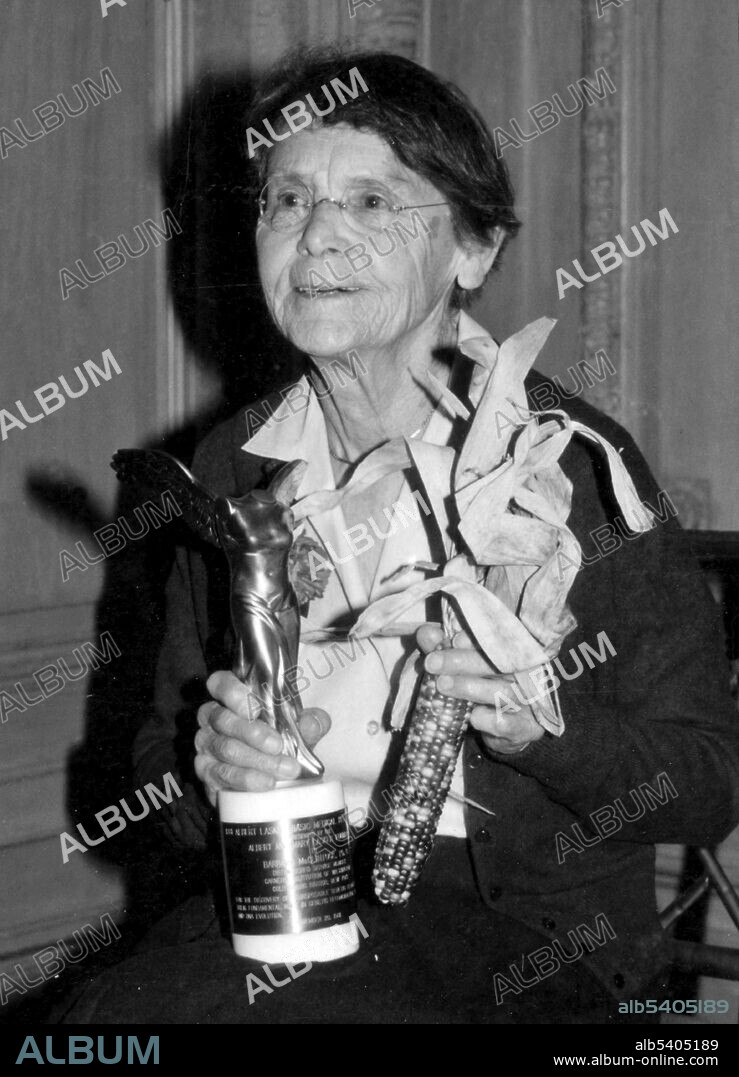alb5405189
Barbara McClintock, American Cytogeneticist

|
Zu einem anderen Lightbox hinzufügen |
|
Zu einem anderen Lightbox hinzufügen |



Haben Sie bereits ein Konto? Anmelden
Sie haben kein Konto? Registrieren
Dieses Bild kaufen.
Nutzung auswählen:

Titel:
Barbara McClintock, American Cytogeneticist
Untertitel:
Siehe automatische Übersetzung
Barbara McClintock holding Lasker Award and an ear of corn. McClintock (1902-1992) was one of the world's most distinguished cytogeneticists. She did groundbreaking research on the phenomenon of how genes in chromosomes could "jump" during the breeding of maize plants. She also showed how certain genes were responsible for turning on or off physical characteristics, such as the color of leaves or individual corn kernels. She developed theories to explain the suppression or expression of genetic information from one generation of maize plants to the next that defied the common wisdom of molecular biology prevalent during the 1950s. In the early 1960s, she traveled extensively, collected maize samples that demonstrated interesting evolutionary characteristics. She and her colleagues spent two decades assembling data on differences in South American maize, which were published in 1981 as "The Chromosomal Constitution of Races of Maize". In 1983, at the age of 81, she received the Nobel Prize in Physiology or Medicine for her work on mobile genetic elements, the first woman to receive an unshared Nobel Prize in that category. Photographed by Bernard Gotfryd, 1981.
Bildnachweis:
Album / Science Source / LIBRARY OF CONGRESS
Freigaben (Releases):
Model: Nein - Eigentum: Nein
Rechtefragen?
Rechtefragen?
Bildgröße:
3551 x 4921 px | 50.0 MB
Druckgröße:
30.1 x 41.7 cm | 11.8 x 16.4 in (300 dpi)
 Pinterest
Pinterest Twitter
Twitter Facebook
Facebook Link kopieren
Link kopieren Email
Email
